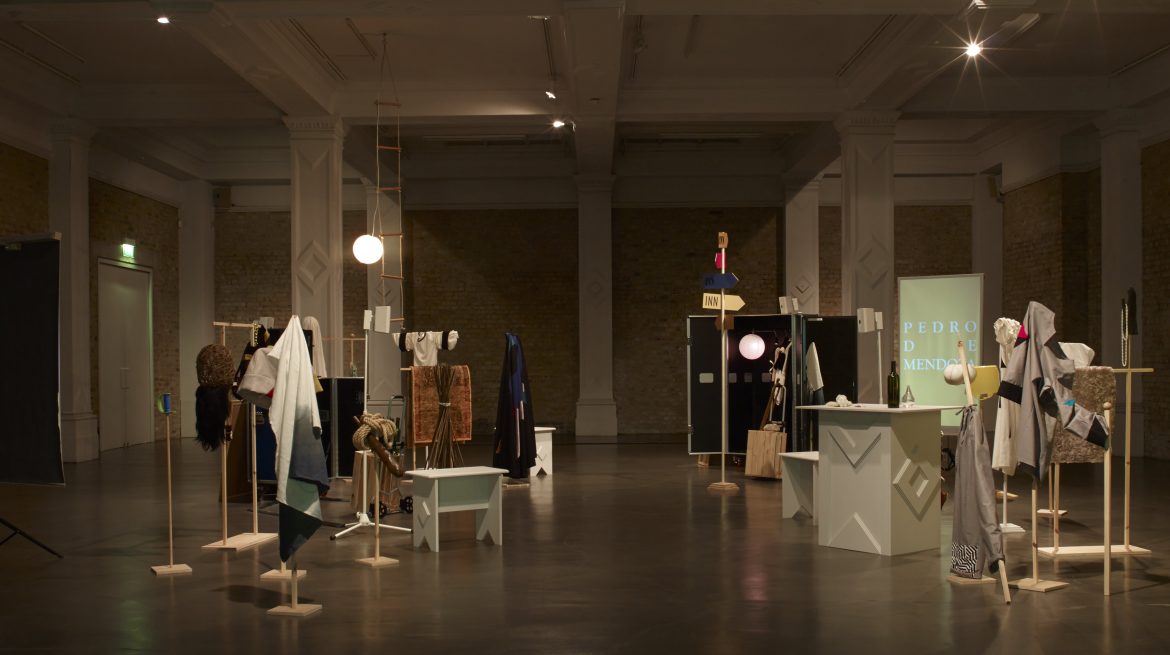
WINNER: CORIN SWORN – SILENT STICKS
Corin Sworn was announced as the winner of the fifth Max Mara Art Prize for Women in January 2014 by a judging panel chaired by Whitechapel Gallery Director Iwona Blazwick and consisting of gallerist Pilar Corrias; collector Candida Gertler; artist Runa Islam and curator and writer Lisa Le Feuvre. Sworn was chosen from a shortlist comprising Beatrice Gibson, Melanie Gilligan, Judith Goddard and Philomene Pirecki.
Based on her winning proposal for the Prize, Sworn undertook a bespoke 6-month residency in Italy divided between Rome, Naples and Venice. Sworn spent the residency immersing herself in the culture of each city, studying traditional plays and meeting actors and experts in the Commedia dell’Arte. She also visited important architectural sites including Renaissance architect Andrea Palladio’s Teatro Olimpico in Vicenza, whose grand trompe-l’oeil stage set is the oldest in the world.
ABOUT CORIN SWORN
Corin Sworn was born in London in 1975, but subsequently raised in Vancouver (Canada); she now lives and works in Glasgow. She received a BA in Psychology from the University of British Columbia, in Vancouver, a BFA at the Institute of Art & Design of Vancouver and an MFA at The Glasgow School of Art. Sworn creates films and installations deeply rooted in research, which weave together history with memories and fragments of true or imagined stories, often with a social-anthropological cut. Alongside Hannah Rickards, she was also awarded with the Leverhulme Prize in 2015 (Visual and Performing Arts category).
ABOUT THE AWARDED ARTWORK
The large-scale installation Silent Sticks draws from the characters and tales of the Commedia dell’Arte, improvised plays from the 16th century that originated in Italy where they continue to be of great cultural importance. Featuring a dramatic stage set with props, costumes, sound and video elements, Silent Sticks evolved out of Sworn’s Italian residency. The characters of la commedia have influenced artists and writers for hundreds of years, from Shakespeare and Marlowe to Goya and Picasso. Sworn was interested in how mistaken identity was frequently used as a literary device in early theatre productions. Actors in radically different guises, such as a woman dressed as a man, a master dressed as a servant or a lord as a beggar played with the perceived fixity of insignia and rank. Early actors and the characters they took on pointed to social freedoms and mobility but also anxieties around misrecognition and social instability. The work adapts a famous 16th century case of imposture in response to these themes. The installation features fragments of sound and video, and is built through sourced and handmade props and costumes derived from the text Scenarios of the Commedia Dell’Arte, by Flaminio Scala, an actor and manager of one of the most pre-eminent theatre companies of the renaissance. Sworn also researched the circulation of clothing of the time and collaborated with the Max Mara fashion house to produce costumes for the work. Based on sketches of garments made by the artist, the detailed costumes included in the installation were developed by designers and skilled craftspeople at the Max Mara headquarters in Reggio Emilia, Italy.
The exhibition opened at the Whitechapel Gallery: 20 May – 19 July 2015, and then at Collezione Maramotti: 3 October 2015 – 28 February 2016.